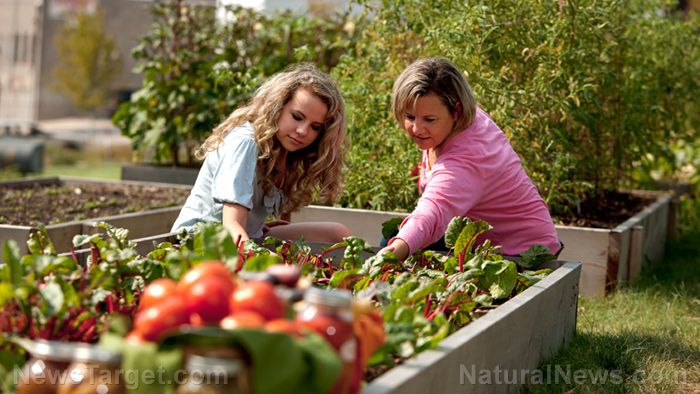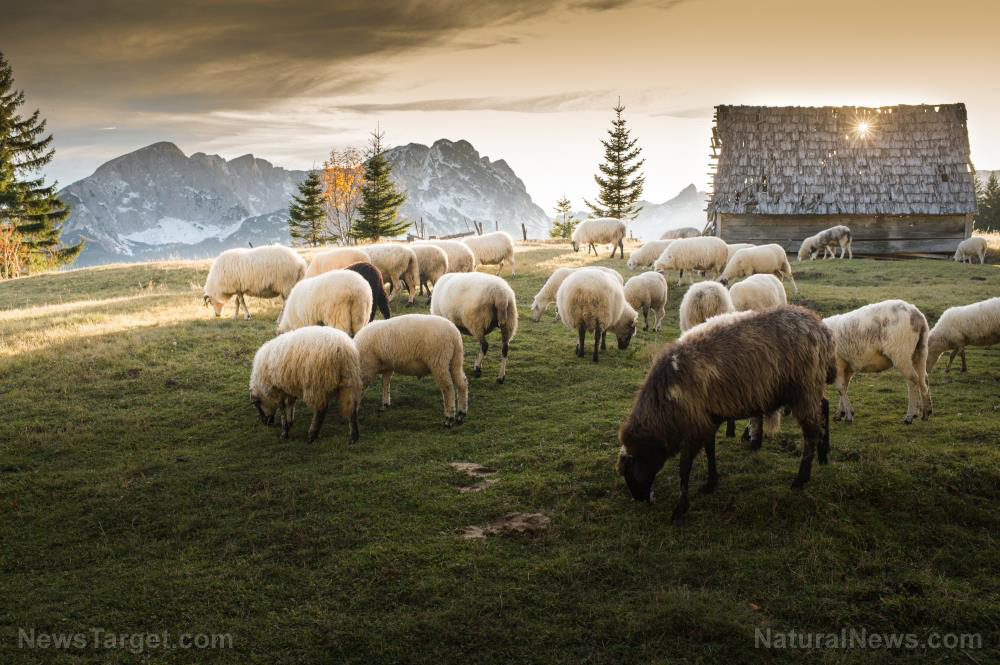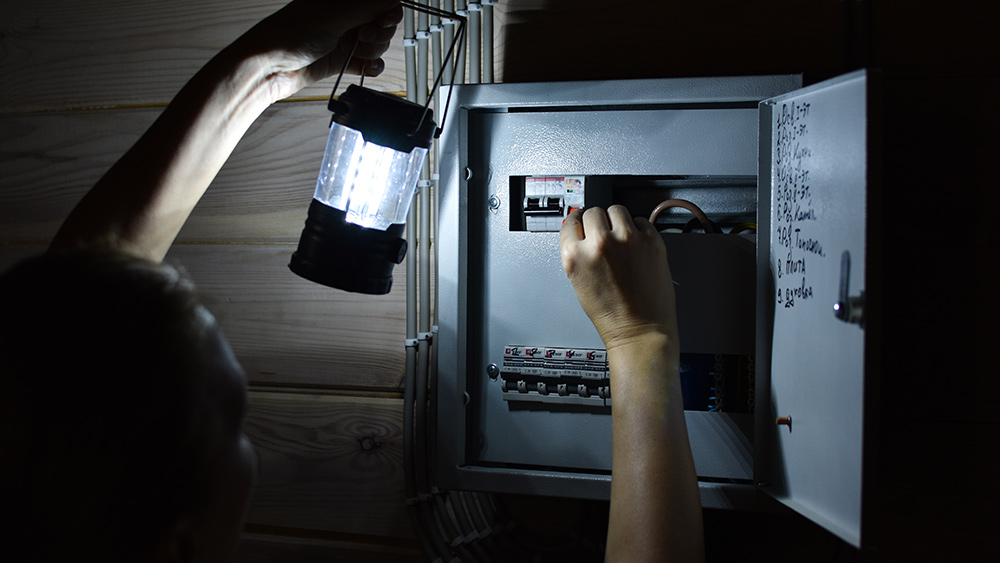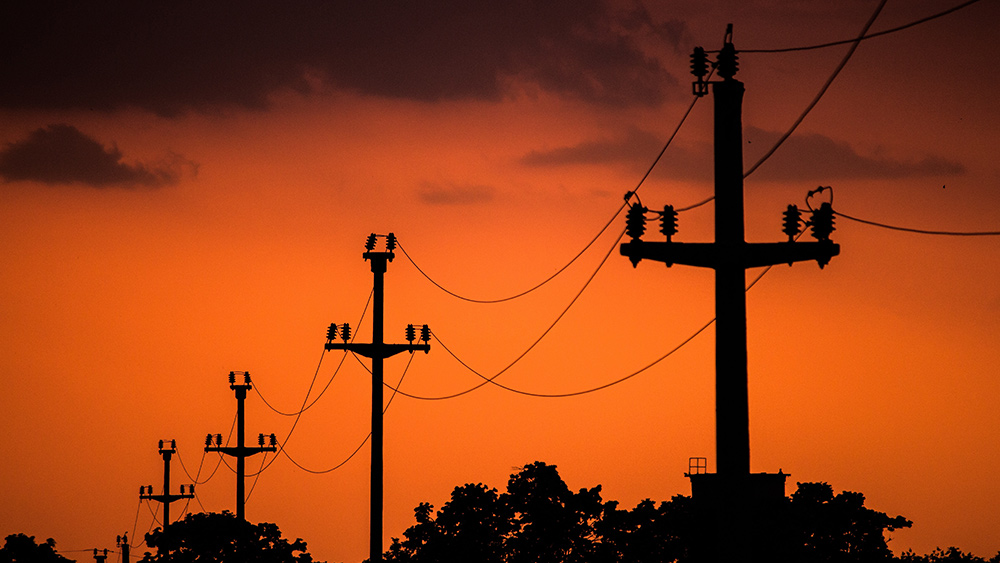Protect yourself against food shortage with these useful prepping practices
02/22/2023 / By Zoey Sky

According to experts, by 2050 the world could have more people than food. They also warned that a worldwide food crisis “is imminent and approaching fast.”
The leading solution suggested by Professor Julian Cribb and other experts in the field is a global switch to vegetarianism, but this alternative comes with its own challenges. Experts think that 10 billion is the max cutoff point for the population and supporting more people than that is almost impossible.
This means that even if everyone agrees to avoid eating meat, issues related to soil, climate, land and access should still be considered.
If you are worried about a food shortage, protect your family by starting useful prepping practices like home gardening and food preservation. (h/t to AskAPrepper.com)
Dwindling food access is a bigger concern than running out of food. Several factors contribute to food access, and getting food from the farm to the table is a complicated process that has already seen some issues in recent years.
Before SHTF, protect yourself against a food shortage with the practices detailed below:
Foraging
Foraging refers to the act of gathering food from the wilderness. This is a great option if you are looking for a way to supplement your diet without spending money.
Foraging food gives you access to a seasonal “supermarket” beyond your homestead. It’s also a great way to save money or make ends meet.
If you plan to forage, here are some things to keep in mind:
- Sign up for lessons or self-study to learn the difference between poisonous plants and edible plants.
- Only take what you will eat.
- Ask permission before foraging on private property.
- Leave fruits and berries for other foragers.
- Never forage for rare species.
If you’re serious about foraging, invest in these essential tools:
- Reference books and field guides so you can check and double-check if a plant is safe to eat.
- Cutting tools like a pair of quality scissors, a pocket knife or mushroom knife or a small digging trowel.
- Baskets to store your harvest.
- Protective clothing like long-sleeved shirts, hiking pants, a wide-brimmed hat and walking shoes to protect against ticks.
What to forage
There are many edible plants to forage and with some knowledge and experience, you can gather a substantial amount of food for personal use or for selling.
However, what you forage will depend on where you live.
Blackberries and raspberries
Blackberries and raspberries can be found growing throughout the world. Blackberries are most abundant in autumn and are easy to identify.
Pick berries and freeze them as a quick treat or preserve them to use throughout the year. Berries can also be used for jams or pies.
Chestnuts
There are many wild nuts to forage and one of the most popular is the sweet chestnut.
Sweet chestnuts can be used to make pesto. You can also add it to holiday stuffing.
Chestnuts can also be roasted and enjoyed on their own. They can be found throughout the United States.
Dandelion
Dandelions are considered an annoying weed by most homeowners, but when SHTF, this edible plant is a godsend.
Dandelion is easy to identify and can be safely consumed after washing thoroughly. You can eat dandelion raw or use it in your cooking.
While all parts of the plant are edible, they are a little bitter.
Elderberries and elderflowers
Forage for elderberries and elderflowers from late May to early July.
Elderflowers are often used to make cordial, a delicious, liqueur-like beverage. The flowers can also be used to make jams, sorbet, or yogurt.
Nettles
Stinging nettles are a wild green and they are easy to identify, but you will need a pair of thick gloves.
Stinging nettle grows abundantly throughout North America and the plant thrives in damp soil.
The plant is often harvested for food and it can grow up to six feet tall in some locations. Look for stinging nettles growing along the roadside in dense patches.
Wild garlic
You can find wild garlic along the banks of streams and rivers since it thrives in damp ground. Wild garlic is a versatile ingredient and can be foraged from late March onwards.
When foraging for wild garlic, look out for its strong, pungent aroma that is reminiscent of garlic.
Be careful when foraging for wild garlic in Canada and the United States. Lily of the valley is a wild garlic look-a-like, but the flowers, leaves and fruits of the lily of the valley plant are poisonous.
Start a home garden
Compared to foraging, home gardening is a more reliable way of protecting yourself against a food shortage. Whether you live on a homestead in the countryside or in a small apartment in the city, you can grow your own food outdoors or indoors. (Related: Home gardening tips: How to grow onions from seed.)
Growing crops indoors
If you live in an apartment, you can still grow vegetables indoors and in a small space. Use pots and planters to grow your favorite herbs and vegetables.
Here are some foods you can grow indoors:
- Avocados
- Beets
- Carrots
- Garlic
- Herbs
- Leafy greens like arugula, kale, lettuce and spinach
- Mandarin oranges
- Microgreens
- Potatoes
- Radishes
- Scallions
- Tomatoes
You will need basic tools and supplies for your indoor garden. Not all these things are mandatory, but they can help increase your chance of success.
- Air circulation – Circulating the air is essential for healthy plant growth.
- Containers – Use containers of the right size for plants you want to grow.
- Fertilizer – Feeding the soil will help feed the plants.
- Humidity – Depending on the plant, you may need to purchase something that allows you to control and monitor the humidity of the growing area.
- Light – Provide natural sunlight for your plants by using large windows and storing pots in the right location. You can also use a grow light instead.
- Potting mix – A good potting mix will help your plants grow well.
- Temperature control – This allows you to monitor and control the temperature.
- Water – Most plants need to be watered regularly to grow.
Growing food in an outdoor or indoor garden could save your life during a food shortage so start planting today.
Food preservation
If you have a garden, learning how to preserve can help make the excess food you grow last longer.
Learning to safely store food and preserve it long-term will help you overcome a food crisis. If things go well, you can also earn extra money with this skill.
You can store and maintain foods using a root cellar or cold storage. Store crops like beets, carrots and garlic in a root cellar.
You can also preserve food by drying or dehydrating it. You can either get a food dehydrator or use alternative methods like an oven or sun drying.
Another option is to learn canning. Invest in a professional canner and other canning equipment. If you want to save money, use a method called a water bath.
In water bath canning, you need a large stock pot to seal jars and preserve the contents. Canning food can make it last for weeks, months and even years.
Raise livestock
The meat industry relies on processing and transportation to get food to consumers. But issues in production will take their toll and can hinder your ability to access meat and dairy.
If you are willing to put in the work, you can also raise livestock on your homestead. This practice is ideal if you also want to eat eggs, dairy and meat with vegetables from your garden.
Depending on where you live, you can raise large animals like cows or smaller ones like chickens or small animals on your property.
Chickens will provide you with eggs and poultry. Meanwhile, cows can give both milk and meat.
Before you raise livestock, check the laws in your state to ensure that you can house, raise and slaughter animals on your homestead.
If a food shortage hits the U.S., life will be challenging for preppers and non-preppers alike.
Find ways to become more self-sufficient so you can provide for your family when SHTF.
Watch the video below to find out why you should harden off your seedlings.
This video is from Tiffany’s Life of Joie channel on Brighteon.com.
More related stories:
Home gardening tips: How to start tomatoes from seed.
Homemade recipes: No-knead artisan bread.
Sources include:
Submit a correction >>
Tagged Under:
food collapse, food independence, Food Preservation, food supply, foraging, green living, home gardening, homesteading, how-to, indoor gardening, livestock, off grid, organic farming, preparedness, prepper, prepping, SHTF, survival, sustainable living, tips
This article may contain statements that reflect the opinion of the author
RECENT NEWS & ARTICLES
COPYRIGHT © 2017 PREPAREDNESS NEWS




















